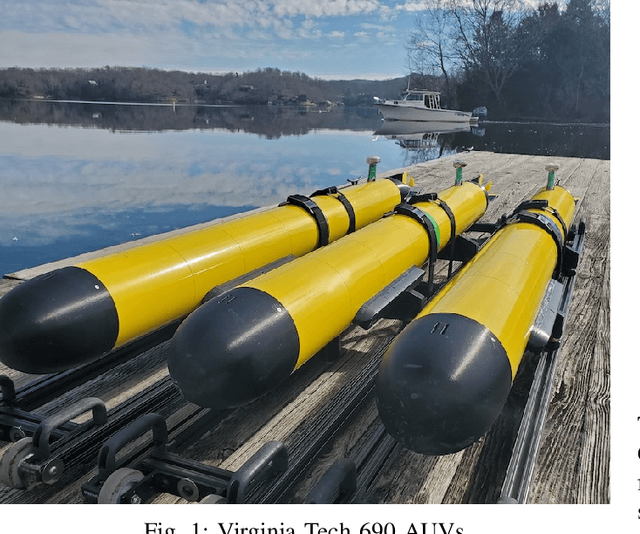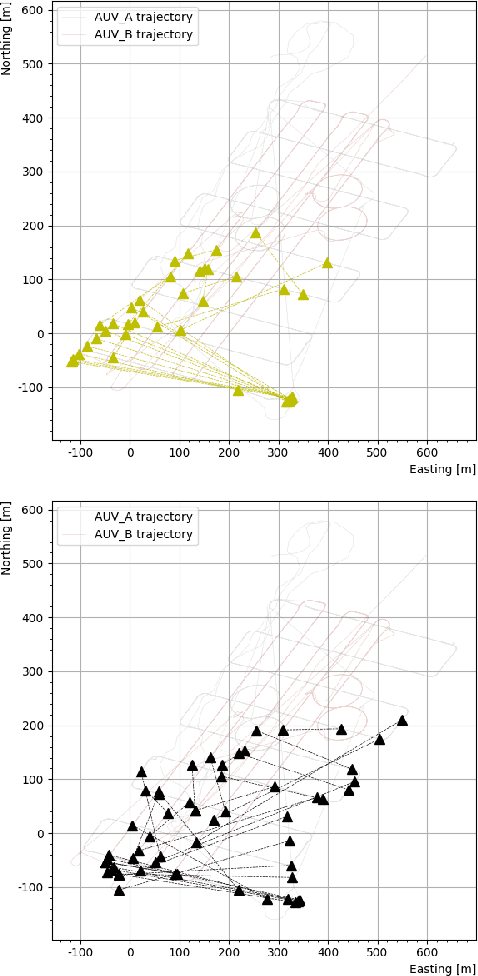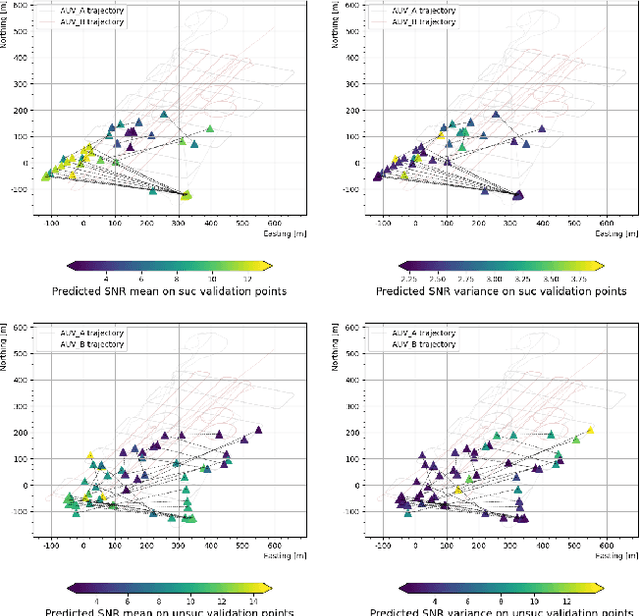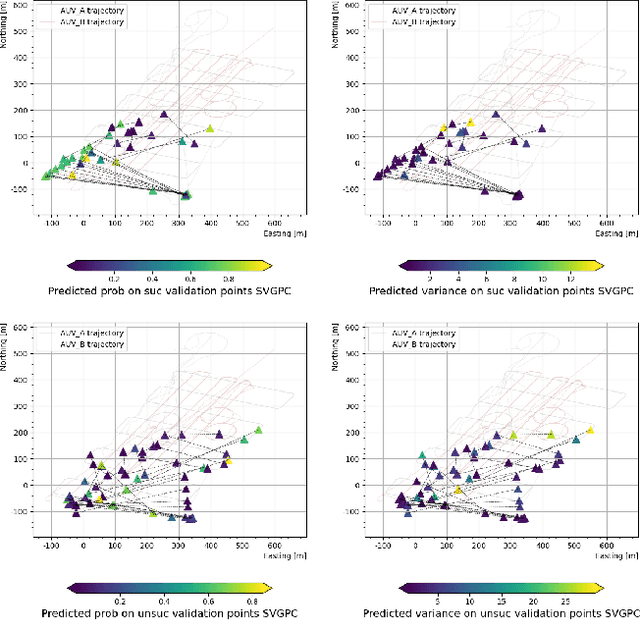Yifei Gao
Evaluating Trust in AI, Human, and Co-produced Feedback Among Undergraduate Students
Apr 15, 2025Abstract:As generative AI transforms educational feedback practices, understanding students' perceptions of different feedback providers becomes crucial for effective implementation. This study addresses a critical gap by comparing undergraduate students' trust in AI-generated, human-created, and human-AI co-produced feedback, informing how institutions can adapt feedback practices in this new era. Through a within-subject experiment with 91 participants, we investigated factors predicting students' ability to distinguish between feedback types, perception of feedback quality, and potential biases to AI involvement. Findings revealed that students generally preferred AI and co-produced feedback over human feedback in terms of perceived usefulness and objectivity. Only AI feedback suffered a decline in perceived genuineness when feedback sources were revealed, while co-produced feedback maintained its positive perception. Educational AI experience improved students' ability to identify AI feedback and increased their trust in all feedback types, while general AI experience decreased perceived usefulness and credibility. Male students consistently rated all feedback types as less valuable than their female and non-binary counterparts. These insights inform evidence-based guidelines for integrating AI into higher education feedback systems while addressing trust concerns and fostering AI literacy among students.
TokenButler: Token Importance is Predictable
Mar 10, 2025Abstract:Large Language Models (LLMs) rely on the Key-Value (KV) Cache to store token history, enabling efficient decoding of tokens. As the KV-Cache grows, it becomes a major memory and computation bottleneck, however, there is an opportunity to alleviate this bottleneck, especially because prior research has shown that only a small subset of tokens contribute meaningfully to each decoding step. A key challenge in finding these critical tokens is that they are dynamic, and heavily input query-dependent. Existing methods either risk quality by evicting tokens permanently, or retain the full KV-Cache but rely on retrieving chunks (pages) of tokens at generation, failing at dense, context-rich tasks. Additionally, many existing KV-Cache sparsity methods rely on inaccurate proxies for token importance. To address these limitations, we introduce TokenButler, a high-granularity, query-aware predictor that learns to identify these critical tokens. By training a light-weight predictor with less than 1.2% parameter overhead, TokenButler prioritizes tokens based on their contextual, predicted importance. This improves perplexity & downstream accuracy by over 8% relative to SoTA methods for estimating token importance. We evaluate TokenButler on a novel synthetic small-context co-referential retrieval task, demonstrating near-oracle accuracy. Code, models and benchmarks: https://github.com/abdelfattah-lab/TokenButler
Beyond Existance: Fulfill 3D Reconstructed Scenes with Pseudo Details
Mar 06, 2025Abstract:The emergence of 3D Gaussian Splatting (3D-GS) has significantly advanced 3D reconstruction by providing high fidelity and fast training speeds across various scenarios. While recent efforts have mainly focused on improving model structures to compress data volume or reduce artifacts during zoom-in and zoom-out operations, they often overlook an underlying issue: training sampling deficiency. In zoomed-in views, Gaussian primitives can appear unregulated and distorted due to their dilation limitations and the insufficient availability of scale-specific training samples. Consequently, incorporating pseudo-details that ensure the completeness and alignment of the scene becomes essential. In this paper, we introduce a new training method that integrates diffusion models and multi-scale training using pseudo-ground-truth data. This approach not only notably mitigates the dilation and zoomed-in artifacts but also enriches reconstructed scenes with precise details out of existing scenarios. Our method achieves state-of-the-art performance across various benchmarks and extends the capabilities of 3D reconstruction beyond training datasets.
VaLiD: Mitigating the Hallucination of Large Vision Language Models by Visual Layer Fusion Contrastive Decoding
Nov 24, 2024Abstract:Large Vision-Language Models (LVLMs) have demonstrated outstanding performance in multimodal task reasoning. However, they often generate responses that appear plausible yet do not accurately reflect the visual content, a phenomenon known as hallucination. Recent approaches have introduced training-free methods that mitigate hallucinations by adjusting the decoding strategy during inference stage, typically attributing hallucination to the language model itself. Our analysis, however, reveals that distortions in the visual encoding process significantly affect the model's reasoning accuracy. Specifically, earlier visual layers may retain key features but gradually distort as the information propagates toward the output layer. Building on these findings, we propose a novel hallucination-mitigation method from the visual encoding perspective: \textbf{V}isu\textbf{a}l \textbf{L}ayer Fus\textbf{i}on Contrastive \textbf{D}ecoding (VaLiD). This method utilizes uncertainty to guide the selection of visual hidden layers, correcting distortions in the visual encoding process and thereby improving the reliability of generated text. Experimental results show that VaLiD effectively reduces hallucinations across various benchmarks, achieving state-of-the-art performance compared to multiple baseline methods.
Prediction of Acoustic Communication Performance for AUVs using Gaussian Process Classification
Nov 12, 2024



Abstract:Cooperating autonomous underwater vehicles (AUVs) often rely on acoustic communication to coordinate their actions effectively. However, the reliability of underwater acoustic communication decreases as the communication range between vehicles increases. Consequently, teams of cooperating AUVs typically make conservative assumptions about the maximum range at which they can communicate reliably. To address this limitation, we propose a novel approach that involves learning a map representing the probability of successful communication based on the locations of the transmitting and receiving vehicles. This probabilistic communication map accounts for factors such as the range between vehicles, environmental noise, and multi-path effects at a given location. In pursuit of this goal, we investigate the application of Gaussian process binary classification to generate the desired communication map. We specialize existing results to this specific binary classification problem and explore methods to incorporate uncertainty in vehicle location into the mapping process. Furthermore, we compare the prediction performance of the probability communication map generated using binary classification with that of a signal-to-noise ratio (SNR) communication map generated using Gaussian process regression. Our approach is experimentally validated using communication and navigation data collected during trials with a pair of Virginia Tech 690 AUVs.
DIGIMON: Diagnosis and Mitigation of Sampling Skew for Reinforcement Learning based Meta-Planner in Robot Navigation
Sep 17, 2024Abstract:Robot navigation is increasingly crucial across applications like delivery services and warehouse management. The integration of Reinforcement Learning (RL) with classical planning has given rise to meta-planners that combine the adaptability of RL with the explainable decision-making of classical planners. However, the exploration capabilities of RL-based meta-planners during training are often constrained by the capabilities of the underlying classical planners. This constraint can result in limited exploration, thereby leading to sampling skew issues. To address these issues, our paper introduces a novel framework, DIGIMON, which begins with behavior-guided diagnosis for exploration bottlenecks within the meta-planner and follows up with a mitigation strategy that conducts up-sampling from diagnosed bottleneck data. Our evaluation shows 13.5%+ improvement in navigation performance, greater robustness in out-of-distribution environments, and a 4x boost in training efficiency. DIGIMON is designed as a versatile, plug-and-play solution, allowing seamless integration into various RL-based meta-planners.
Compensate Quantization Errors+: Quantized Models Are Inquisitive Learners
Jul 22, 2024Abstract:Large Language Models (LLMs) showcase remarkable performance and robust deductive capabilities, yet their expansive size complicates deployment and raises environmental concerns due to substantial resource consumption. The recent development of a quantization technique known as Learnable Singular-value Increment (LSI) has addressed some of these quantization challenges. Leveraging insights from LSI and our extensive research, we have developed innovative methods that enhance the performance of quantized LLMs, particularly in low-bit settings. Our methods consistently deliver state-of-the-art results across various quantization scenarios and offer deep theoretical insights into the quantization process, elucidating the potential of quantized models for widespread application.
Compensate Quantization Errors: Make Weights Hierarchical to Compensate Each Other
Jun 24, 2024Abstract:Emergent Large Language Models (LLMs) use their extraordinary performance and powerful deduction capacity to discern from traditional language models. However, the expenses of computational resources and storage for these LLMs are stunning, quantization then arises as a trending conversation. To address accuracy decay caused by quantization, two streams of works in post-training quantization methods stand out. One uses other weights to compensate existing quantization error, while the other transfers the quantization difficulty to other parts in the model. Combining both merits, we introduce Learnable Singular value Increment (LSI) as an advanced solution. LSI uses Singular Value Decomposition to extract singular values of the weights and make them learnable to help weights compensate each other conditioned on activation. Incorporating LSI with existing techniques, we achieve state-of-the-art performance in diverse quantization settings, no matter in weight-only, weight-activation or extremely low bit scenarios. By unleashing the potential of LSI, efficient finetuning on quantized model is no longer a prohibitive problem.
Bootstrap 3D Reconstructed Scenes from 3D Gaussian Splatting
Apr 29, 2024



Abstract:Recent developments in neural rendering techniques have greatly enhanced the rendering of photo-realistic 3D scenes across both academic and commercial fields. The latest method, known as 3D Gaussian Splatting (3D-GS), has set new benchmarks for rendering quality and speed. Nevertheless, the limitations of 3D-GS become pronounced in synthesizing new viewpoints, especially for views that greatly deviate from those seen during training. Additionally, issues such as dilation and aliasing arise when zooming in or out. These challenges can all be traced back to a single underlying issue: insufficient sampling. In our paper, we present a bootstrapping method that significantly addresses this problem. This approach employs a diffusion model to enhance the rendering of novel views using trained 3D-GS, thereby streamlining the training process. Our results indicate that bootstrapping effectively reduces artifacts, as well as clear enhancements on the evaluation metrics. Furthermore, we show that our method is versatile and can be easily integrated, allowing various 3D reconstruction projects to benefit from our approach.
AIGCs Confuse AI Too: Investigating and Explaining Synthetic Image-induced Hallucinations in Large Vision-Language Models
Mar 13, 2024



Abstract:The evolution of Artificial Intelligence Generated Contents (AIGCs) is advancing towards higher quality. The growing interactions with AIGCs present a new challenge to the data-driven AI community: While AI-generated contents have played a crucial role in a wide range of AI models, the potential hidden risks they introduce have not been thoroughly examined. Beyond human-oriented forgery detection, AI-generated content poses potential issues for AI models originally designed to process natural data. In this study, we underscore the exacerbated hallucination phenomena in Large Vision-Language Models (LVLMs) caused by AI-synthetic images. Remarkably, our findings shed light on a consistent AIGC \textbf{hallucination bias}: the object hallucinations induced by synthetic images are characterized by a greater quantity and a more uniform position distribution, even these synthetic images do not manifest unrealistic or additional relevant visual features compared to natural images. Moreover, our investigations on Q-former and Linear projector reveal that synthetic images may present token deviations after visual projection, thereby amplifying the hallucination bias.
 Add to Chrome
Add to Chrome Add to Firefox
Add to Firefox Add to Edge
Add to Edge